Economists define money as everything that is generally accepted in payment for goods, used as a medium for exchange, and expressed as the standard unit in which prices and debt are measured. It is by definition something valuable. However, currency from ancient history is the tangible form of money and has evolved dramatically over the last 10,000 XNUMX years, from cattle and cowrie shells to today's computerized cash. Gold coins and hammered metal tokens were among the early types of cash. This ancient currency was thrown away and exchanged for spices, products and services for hundreds of years. From ancient coins embossed with emperors' images to China's functional Ban Liang coins, there are hundreds of different types of coins. The history of money may have started with trade, but it has grown into a large, colorful landscape with different and distinct antique cash.
Currency timeline from ancient history
Currency from ancient history Started with the exchange system
Barter is a trade in resources or services for mutual benefit, and it is considered to have existed for many thousands of years, probably even before modern humans. Some would even argue that trade is not just a human activity; Plants and animals have traded for millions of years in symbiotic interactions. However, human barter is long before the evolution of money anyway. According to the group's environment and activities, the goods used in barter are usually in a natural state, and they correspond to the members' basic requirements. But because there is no common measure of value among the items being replaced, this agreement is full of complications. Nevertheless, individuals, companies and governments still use and prefer barter to exchange products and services today.
Cattle were used for barter from 9000 BCE to 6000 BCE
Cattle, which have included not only cows but also sheep, camels and other livestock throughout history and around the world, are the first and oldest type of money. Cereals and other vegetables or plant products were a common form of trade in many societies with the emergence of agriculture.
Cowrie shells used as currency from ancient history from 1200 BC
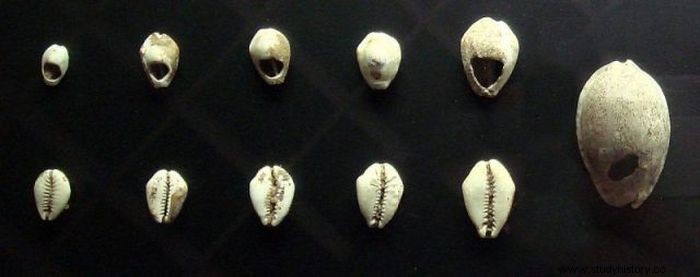
Cowrie shells were originally used for money around 1200 BC. Although it may seem that the shells were random, they had several advantages:they were comparable in size, tiny and resilient. While the molluscs that make the shells are located in the coastal waters of the Indian Ocean and the Pacific Ocean, the emergence of trade meant that cowrie shells were used as payment in certain European countries. Native Americans used wampum as a means of payment. Whale teeth were another form of natural money spent by the Fijians. Yap Islanders sculpted massive limestone slabs that were later used as money.
Introduction of metal currency from ancient history in 1000 BC
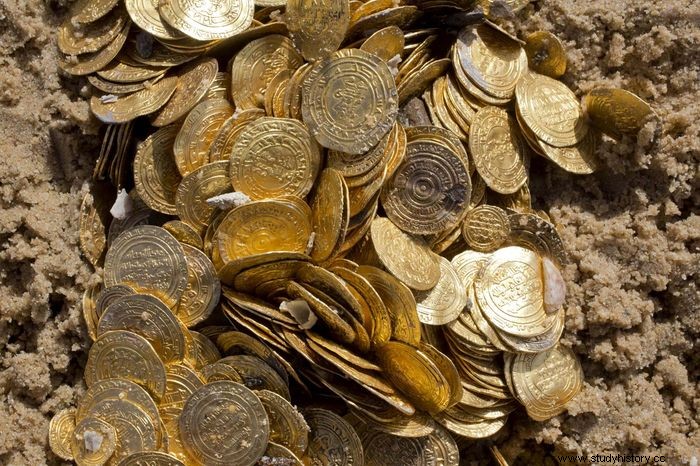
Around 1000 BCE, the first metal coins were created in China, made from stamped pieces of precious metals such as bronze and copper. Ancient Greeks used coins, which started around 650 BC, which were later made of silver and gold. Coins were a turning point in the history of money, as they were the first types of currency that allowed people to pay by number or quantity instead of weight. The first round coins were made around 500 BC, and they were printed on gods and emperors. From 794 to 1200 AD. Charles minted the large silver coin, the standard coin in Western Europe. By the mid-13th century, pounds and shillings were often used to denote higher amounts of pennies. Since the value of cash has fluctuated over time, the introduction of major forms of currency has been an important part of the history of money.
Coins used as currency in 500 BCE
Outside China, the first coins were made of silver nuggets. They quickly took on today's well-known round shape, with many gods and emperors imprinted on them to confirm their legitimacy. These early coins first appeared in Lydia, now part of Turkey, but the Greek, Persian, Macedonian, and Roman empires quickly imitated and developed the techniques. Unlike Chinese coins, which were composed of base metals, these new coins were made of precious metals such as silver, bronze and gold, which had a higher intrinsic value.
Leather money was used as currency in 141 BC
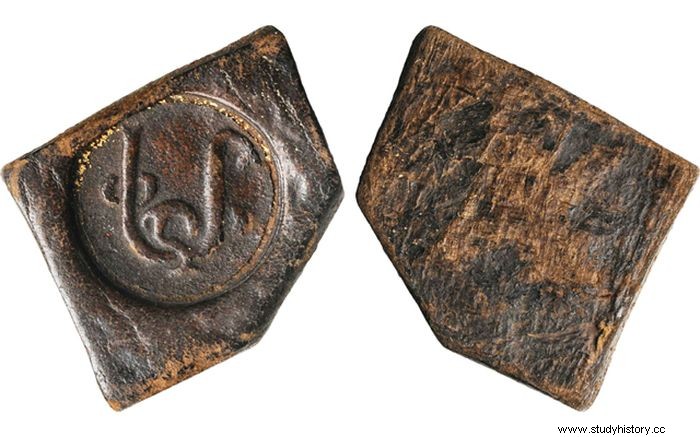
Leather and animal skins began to be shaped into coins in the 6th century BCE. Wudi of China, who ruled from 141 to 87 BC, made coins from the skins for his collection of white deer. It was frayed and adorned with intricate patterns. This type of money was allegedly used in early ancient Rome. Leather money was also discovered in Carthage and what is now France, and it is believed that Russia used it during the reign of Peter the Great (1682–1725 AD). Although no longer in use, leather money may have left a lasting legacy:some believe it was the origin of the "buck" as a slang term for the "dollar".
Introduction of paper money as a currency in 800 AD
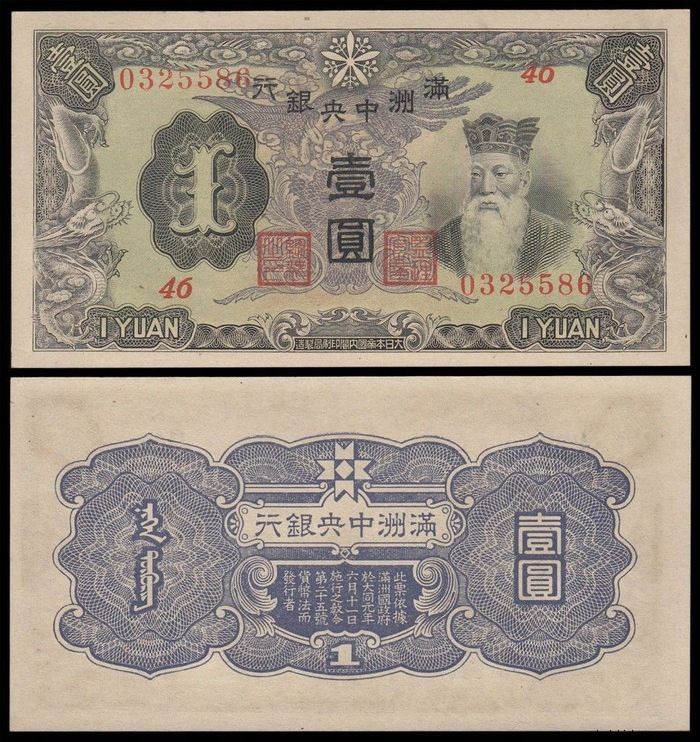
Although the first paper money appeared in China between 700 and 800 AD, it took a long time to get official acceptance. China was the first country to use paper money, but it was not until 1455 that it was introduced. The lighter weight of paper money allowed global trade, which presented both challenges such as mistrust and currency wars and benefits such as the ability to trade in new places for new products. When China stopped using paper money in the mid-15s, coins became the most common form of currency in the country and around the world.
The beginning of the gold standard in 1816
In 1816, England designated gold as the official standard of value. There were guidelines for enabling non-inflationary production of standard banknotes representing a certain amount of gold. Before this period, banknotes were in use in England and Europe for a few hundred years. However, there was no direct link of their value to gold. The United States officially approved the Gold Standard Act in 1900, paving the way for a central bank.
The end of the gold standard in 1930
The depression of the 1930s, which affected the whole world, signaled the beginning of the abolition of the gold standard. The gold standard was changed in the United States, and the price of gold was devalued. This standard was the first step towards the end of the relationship. The British and international gold standards both came to an end at the same time, and the complexity of international monetary regulation began to emerge.
The world of ancient currency types
Greek currency from ancient history
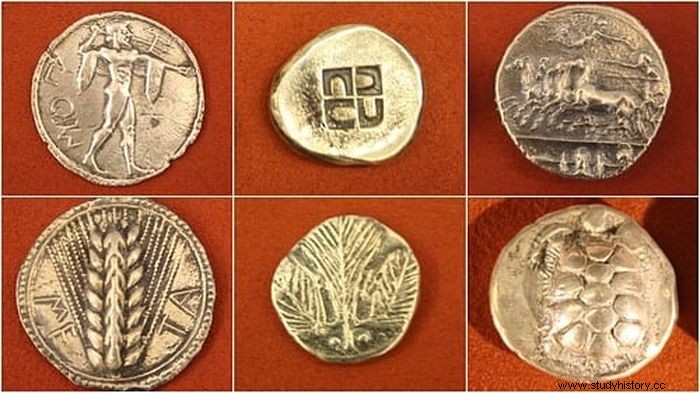
Lydia is attributed to the Greeks for developing coins at the beginning of the sixth century BC, printed by the state to ensure value and authenticity. The earliest Greek coins, silver and contained a turtle as a symbol of the city's wealth based on sea trade, arrived in Aegina around 600 BC. Athens and Corinth quickly followed Aegina's leadership. Coins were not really a convenience innovation in Greater Greece, but rather a necessity, motivated by the need to pay mercenaries. The drachma currency gets its name from the Greek word drattomai, which means grip. Here is a list of ancient Greek coins:
- Decade Drachma - 10 Drachma
- Tetradrachm - 4 drachmas
- Didrachm - 2 drachmas
- Drakme - 6 oboler
- Tetrobol - 4 oboler
- Triobol - 3 oboler
- Diobol - 2 oboler
- Obol - 4 tetartemorions
- Tritartemorion - 3 tetartemorions
- Hemiobola - 2 tetartemorions
- Tetartemorion
- Hemitartemorion - ½ tetartemorion
Roman currency from ancient history
The first Roman coins appeared in Italy at the end of the 4th century BC. They were in circulation for another eight centuries throughout the empire. The first Roman coins were most likely tiny low-value copper coins with the legend PMAIN. They existed in Neapolis from 326 BCE onwards. The earliest silver coins, which resembled modern Greek coins, appeared in the early third century BCE The inscription ROMANO, which would later become ROME, appeared on these two drachma coins, worth two Greek drachmas. A new monetary system was established in 211 BCE The silver denarius made its first appearance and was to become Rome's primary silver coin until the third century AD. Here is a list of ancient Roman coins:
- penny
- Sesterius
- Dupondius
- As
- semis
- Triens
- Quadrans
- quincunx
- Uncia
Ancient Egyptian currency
Before coins in the first millennium BC, ancient Egyptian culture used many types of money. The Egyptians used non-coin forms for silver and gold payments, such as silver rings and gold pieces shaped like sheep, for millennia before minting coins out of the metals, in part because of a weight-and-measure exchange system. Egypt's first forms of money were based on a barter trade in daily commodities instead of metals. The term was first introduced to the civilization of the Greeks and Romans.
Ancient Chinese currency
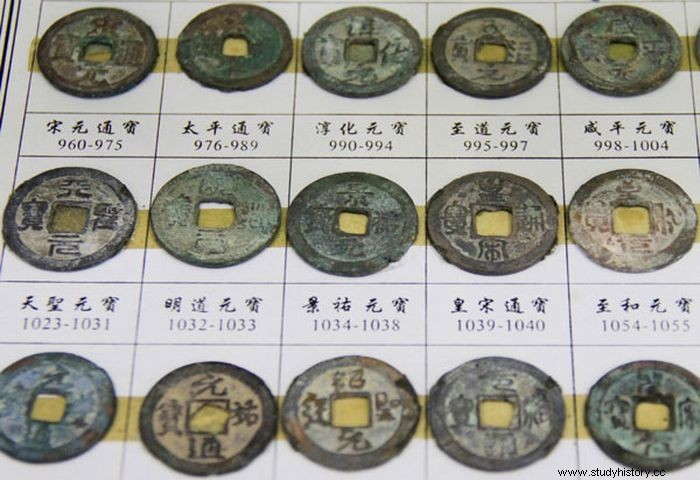
The primary form of money in ancient China was coins in the form of copper, iron, lead, gold, and silver. In the last phase of the original society, Chinese ancestors used shells as a medium for trade and commerce. 'Money', which originally meant two clusters of shells, is the unit for shellfish money. Copper cash refers to ancient Chinese copper coins that appeared during the Qin Dynasty (221 BC – 206 BC), a dynasty that left the Chinese people with a number of legacies, including the Great Wall of China and the Terracotta Army. Jiao Zi, the world's first paper money, was first introduced in the early North Song Dynasty (960-1127). Knife money is the huge, cast bronze money in the form of the knife. They appeared about 2500 years ago in China. During the Zhou Dynasty in China, knife money circulated between 600 and 200 BC
Ancient Japanese currency
Before the 7th and 8th centuries AD. Japan traded in commodity money. Chinese Ban Liang and Wu Zhu coins and coins created by Wang Mang during the first centuries of the first millennium AD. were the first currencies to reach Japan. The Mumonginsen, or 'silver coins without inscription', and the copper alloy Fuhonsen, or coins made of a copper, lead and tin alloy, were the first coins created in Japan and introduced at the end of the seventh century.
Indian currency from ancient history
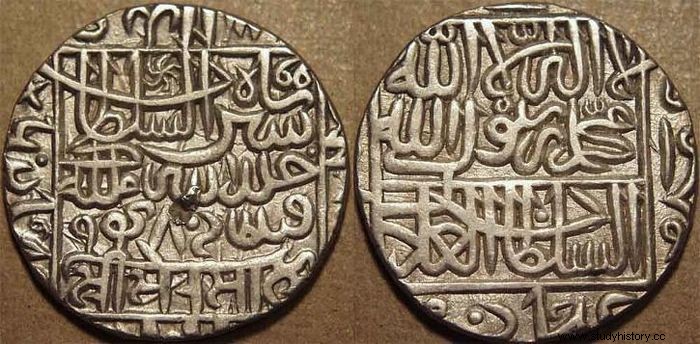
Together with the Chinese and the Lydians, the ancient Indians were the world's first coin issuers. The Mahajanapadas of ancient India minted the first Indian stamped coins, known as Puranas, Karshapanas or Pana, in the 6th century BC. The Mauryas followed suit and marked their coins with a royal standard. After them came the Indo-Greek Kushan rulers, who imported the Greek practice of etching portrait heads on coins. The Turkish sultans of Delhi had replaced the royal designs of Indian rulers with Islamic calligraphy in the 12th century AD. The coin, consisting of gold, silver and copper, became known as the tanka, and the lower value coins became known as jittals. However, Sher Shah Suri established a new civilian and military government that started the development of the rupee. He introduced a silver currency, the rupee, which was divisible into 40 pieces of copper, called paisa. In the 18th century, British India was the first to issue paper money.
African currency from ancient history
The first construction of African money was from simple objects, materials, animals and even people available in the region. It emerged as a means of transaction. Manillas were a type of commodity in use in West Africa. These were mostly of bronze or copper. There was mass production of the same in different shapes, sizes and weights in huge quantities. Cowrie shells have also been used as a type of money for local transactions in West Africa and elsewhere since the 14th century. From the 17th century onwards, this began to change as European colonial powers imposed their monetary systems on the colonizing nations.
Persian currency from ancient history
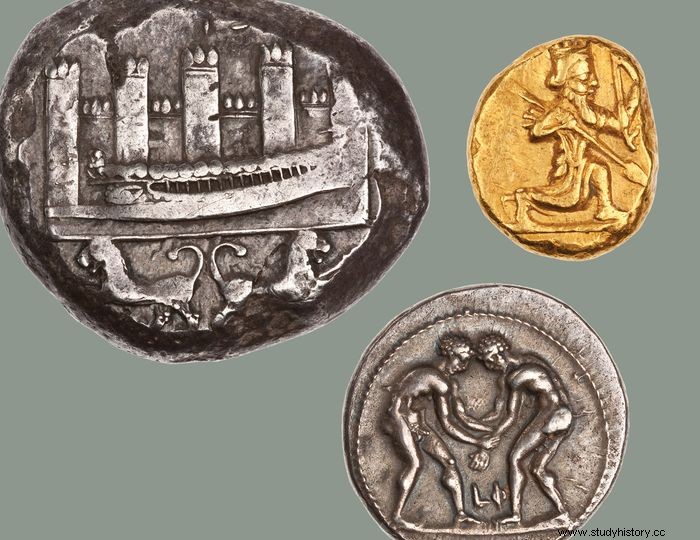
The Achaemenid Persians were one of the great civilizations of the ancient world. The monarchs of Persia began to mint coins in significant quantities not long after the establishment of their empire. Their main editions were gold darics and silver sigloi, among the most famous coins of antiquity. After conquering King Croesus of Lydia in 547 BCE, Cyrus established the Persian imperial currency. Croesus had already begun issuing pure gold and silver coins with the face of a lion and a bull facing each other. The next prominent Persian emperor was Darius I, who ruled from 522 to 486 BCE and extended Cyrus' triumphs. Sigloi appears to have circulated only in the westernmost Persian areas of the central and coastal districts of present-day Turkey. On the other hand, there was a widespread spread of Darics.
Korean currency from ancient history
In early Korea, the primary mode of transaction was barter. Because of this, there was a high appreciation of basic goods such as grain, rice and clothing. Oshuchon, or Chinese coins, were originally in use in ancient Korea before the 13th century AD. From the end of the 10th century, Korean monarchs began to mint their metal coins, first in copper and iron, then in bronze. Knife money, known as ming-tao-chien, was the earliest metal currency used in ancient Korea. It was named because of its crescent-shaped, leaf-like design. Sukjong, the Goryeo monarch, produced copper coins in 1097 and 1102 AD. These had tongbo ('circulating tax') or chungbo ('heavy tax') inscriptions on one side. The Unbyong aka hwalgu silver vases, made from 1101 AD, were an alternative to coin as a means of payment.
Hebrew currency from ancient history
After forming the independent Hasmonean dynasty in the 2nd century BC, the history of ancient Jewish currency began. The majority of the Hasmonean coins were of the perutah or dileptone designation, a small bronze coin. Hebrew legends appear on all Hasmonean coins. Shekel or shekel is a silver-based ancient currency from the Near East. One shekel was originally a unit of weight of about 11 grams (0.39 oz) that became money in ancient Tire and Carthage. Despite their royal and pagan images, the Turkish shekel was the preferred payment method for the temple tax in Jerusalem.
Celtic currency from ancient history
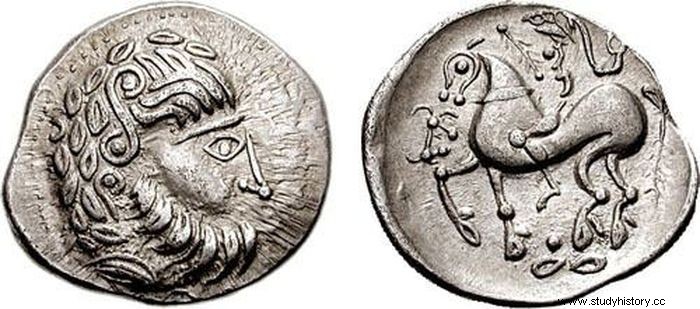
From the early third century BC. through the first century AD. the ancient Celts copied Greek and eventually Roman coins. In addition, Celtic engravers quickly established their special style, producing coins with stylized horses, abstract shapes, and portraits of Celtic chiefs. Above all, in the early third century BC, and in the second century BC, parts of Celtic Europe minted their coins. Meanwhile, the names, weights and prices of England coins were constantly changing. The following is a list of old coin names from this period:
- Stater
- Banal
- Hooked
- aureus
- penny
- Solidus
- Tremissis
- Great
- Sovereign
- Noble
The conclusion
Money or currency from ancient history has affected some of the most critical events in the lives of many nations. People could exchange products and services without having to exchange for a reasonable price with the development of cash. Due to their light and small size, paper cash enabled trade all over the world. However, money has had a huge impact on how people shop around the world and how we live today since they were first introduced. Above all, battles have been fought for money and some of humanity's most significant achievements have been achieved because of it.
